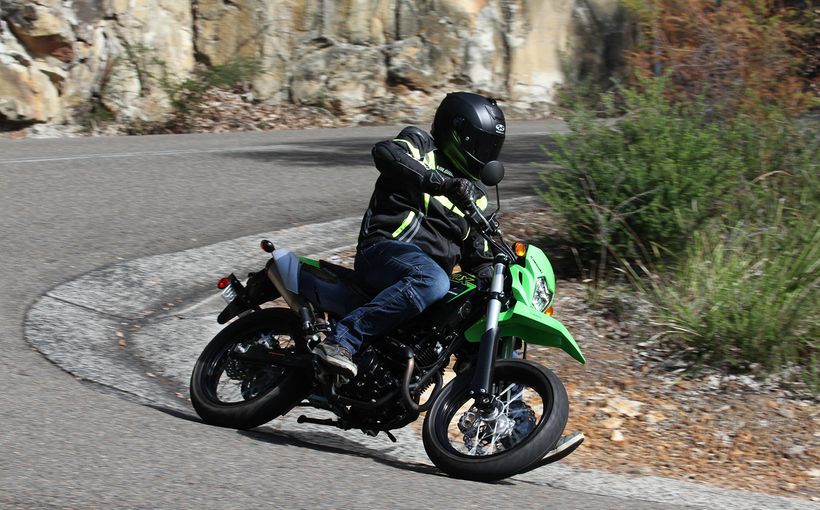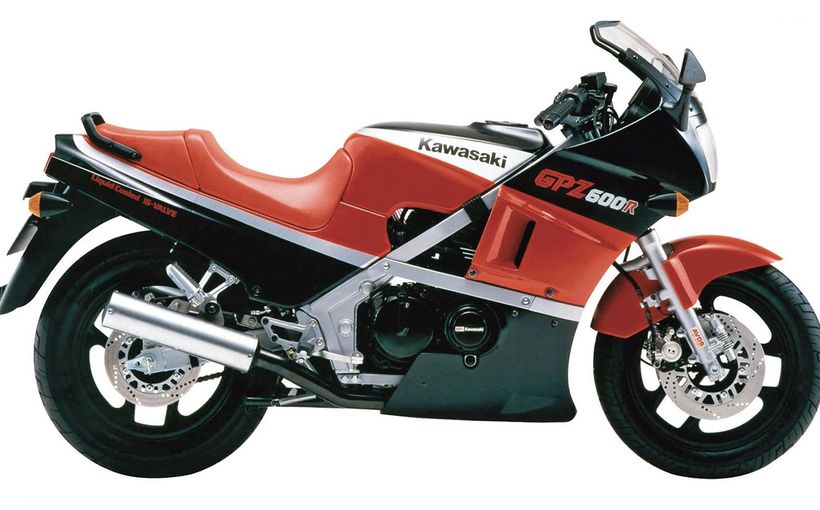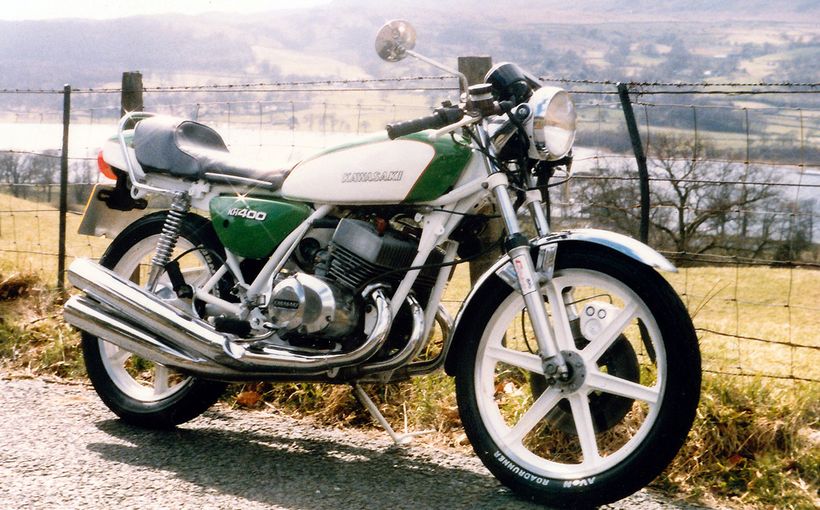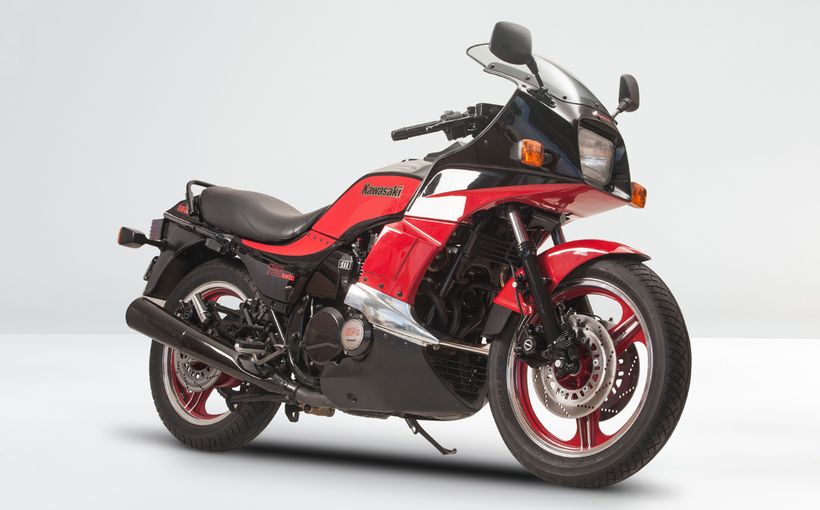Kawasaki 900 Z1: putting the ‘Super’ in Superbike

In 1972 Kawasaki was concerned that its new 900 Z1 superbike could be dangerous in inexperienced hands. And it had every reason to be, given that it set a new performance benchmark for mass-produced motorcycles that left Japan’s original superbike - Honda’s CB750 - in the shade.
“We created the Kawasaki 900 Super-4 (aka Z1) for experienced riders who want to move up to a bigger, stronger and far safer motorcycle. It combines super sports power and acceleration with grand touring capability and comfort. We are confident that the men who will buy this motorcycle will respect the power potential and use it judiciously as a safety factor,” warned Kawasaki boss Mr Yamada in a statement issued soon after the Z1’s launch.
“The Kawasaki 900 Super-4 is an expression of confidence in the future of high-performance motorcycles and expresses Kawasaki’s confidence in their owners who will use them with common-sense and courtesy.” Yeah, right.
The CB750 had been on sale for three years when the Kawasaki 900 Z1 arrived with the subtlety of a sledgehammer. For here was the largest and most powerful four-cylinder four-stroke motorcycle Japan had dared to create in mass-production, with 903cc compared to Honda’s 735cc, DOHC to Honda’s SOHC, 82bhp to Honda’s 66bhp, a 12.0-sec standing quarter to Honda’s 12.6 secs and 130mph-plus (208km/h) top speed eclipsing Honda’s 125mph (200km/h).
This new king of the road was not only extremely fast and powerful but its neat packaging and striking good looks made it one of the most desirable and revered motorcycles of the 1970s. It also had a rebellious streak that challenged conservative values.
“It was everything the CB750 should have been. Honda was busy telling everyone that ‘you meet the nicest people on a Honda’ but Kawasaki simply said ‘let the good times roll.’ You could say the CB750 was The Osmonds of the bike world while the Z1 was The Rolling Stones: brash, rude, up-front, in your face,” wrote Z1 fanatic David Marsden in his stellar 1999 publication Original Kawasaki Z1, Z900 & KZ900.
Before the arrival of the 900 Z1, only the very wealthy, a privileged few, could travel at 130mph-plus. In 1972 that all changed, thanks to Kawasaki and what we Aussies called the "Kwaka 900".

Image: Kawasaki
An engineering giant
It’s not surprising that a company with such a large and diverse engineering and technology background produced a robust high-performance motorcycle that took the world by storm.
Although Kawasaki was the smallest of Japan’s four major motorcycle manufacturers, the two-wheeled division was part of the enormous Kawasaki Heavy Industries conglomerate founded by Skozo Kawasaki in 1878.
Although initially focused on ship-building, KHI expanded into many other industries including fixed-wing aircraft and helicopters, high-speed bullet trains, gas turbine generators, bridges, specialised earthmoving equipment like the tunnel-boring machines used to build the Channel Tunnel and advanced robotics to name a few. It also invented the world's first 'Jet-Ski' which added a new dimension to water sports.
Kawasaki’s motorcycle involvement commenced after World War II when its aeronautical department, the Kawasaki Aircraft Company, became redundant due to aircraft manufacture being shelved in Allied-occupied Japan.
However, as the crippled country needed to quickly regain its mobility, the former aircraft factory was re-tooled to manufacturer small two-stroke petrol engines under the Meihatsu brand that Kawasaki had recently acquired.
To cater for burgeoning demand, it committed to a major expansion in 1961 with construction of a new factory in Kobe equipped for mass-production. The same year Kawasaki also took control of Japan’s oldest motorcycle manufacturer, the Meguro Manufacturing Company, which had been producing motorcycles since 1937.
The new Kobe factory was soon turning out Meguro motorcycles from 50cc to 500cc powered by a mix of small two-strokes and four-stroke twins. The old Meihatsu dealer network was also reorganised and renamed Kawasaki Auto Sales.
By 1962 the rise and rise of this new enterprise saw the first motorcycle to wear a Kawasaki badge and development of the Meguro-designed four-stroke twin up to 650cc displacement. However, as these quaint Kawasakis were based on 1950s designs, they looked outdated and struggled to excite buyers in the company’s first foray into North America.

Image: Kawasaki
In 1965 an office was established in Chicago, before relocating to Los Angeles the following year under the Kawasaki Motors Corporation banner.
During the late 1960s and early 1970s it released a number of screaming two-stroke twins and triples which were more modern in design with power (and rubber) to burn, albeit with dubious handling and increasingly anti-social clouds of blue smoke. However, behind the scenes Kawasaki had changed tack.
After thorough analysis of the US market, which confirmed growing demand for large displacement four-stroke engines, a product development team had been established in 1967 under Gyoichi ‘Ben’ Inamura. In September 1968 it presented a 1:1 wooden mock-up of its proposed design to management, featuring a 750cc four-stroke inline four mounted across the frame with dual overhead camshafts and handsome proportions.
However, no sooner had management given the go-ahead to proceed with production, Japan’s largest motorcycle manufacturer Honda delivered a crushing blow when it revealed its ground-breaking CB750 Four at the Tokyo Motor Cycle Show the following month!
Proving that great minds think alike, Honda’s well-kept secret shared similar design principles to Kawasaki’s proposal, including a 750cc four-stroke inline four mounted across the frame. However, it had a single overhead camshaft compared to Kawasaki’s dual-cam design, which at the time was only found on rare and expensive European exotics.
Kawasaki’s decision to temporarily pause the program allowed some breathing space in assessing global market reaction to the CB750 and, if overwhelmingly positive (which it was), coming up with something even faster and more exciting.
Inamura’s team also had the advantage of being able to source a new CB750, which was stripped down and examined in surgical detail, before deciding on Kawasaki’s response. Under the wonderfully misleading codename ‘New York Steak’ the company experimented with displacements from 900cc to 1200cc before settling on 900cc as the optimum size.

Image: Kawasaki
By mid-1970 the first prototypes with various modifications were ready for testing at the Yatabe proving grounds near Tokyo, with a team of riders headed by factory ace Arihiko Kiyohara. One prototype developing 95bhp topped an awe-inspiring 140mph (225km/h) on the vast high-banked test track.
Other examples proved that the proposed production output of 82bhp would not only provide superior performance to its Honda nemesis; the Z1’s larger 900cc displacement and 16hp power advantage would prove to be decisive selling points for Kawasaki dealers.
With full-scale production planned for 1972, early production-spec Z1s were disguised as Honda CB750s to avoid unwanted attention (right down to the Honda badges on their fuel tanks) and subjected to gruelling test schedules on both road and track.
“Two bikes were sent to America and flogged for 950km per day at an average speed of 128km/h,” according to Old Bike Australasia’s Jim Scaysbrook. “To prove the point, the two test bikes were ridden east-west across the country, from Los Angeles to Daytona, then back again – a total distance of 20,150km with only the rear chains replaced. The bikes were then sent back to Japan for evaluation, re-fettled and returned to the USA, where factory riders Paul Smart and Yvon DuHamel were given the task of track testing.
“At the Japanese tests, Kawasaki must have been confident that the Z1 would breeze through these incredibly rigorous routines because they flew in not just a crack team of riders, but major dealers and distributors from several countries, including Australia.
“At the conclusion of the trials, each machine was completely dismantled and checked for defects. A few minor modifications were made to the initial production run, but in general the original design performed almost faultlessly.”
Volume production commenced in mid-1972 as planned and the ‘900 Super Four Model Z1’ as it was called at launch was revealed to the world’s motorcycle press on Sep 16, 1972 at the IFMA motorcycle show in Cologne, Germany.

Image: Kawasaki
The original: Kawasaki 900 Z1
With a 1490mm wheelbase and 2250mm overall length, the new 900 Z1’s kerb weight of 230kg (with all fluids) was only about 5kg lighter than Honda’s CB750, which had been considered anything but a lightweight when launched in 1969.
The new Z1 was a handsome machine, from its black-painted engine and crankcase with polished aluminium highlights to its chrome four-into-four exhaust system with pairs of upswept mufflers on each side to an attractive colour choice of metallic Candy Brown/Orange or Candy Green/Yellow.
The dual-cradle tube-steel frame had 36mm diameter front forks and coil-over rear shocks with adjustable pre-load, 19-inch front and 18-inch rear wheels and powerful front disc/rear drum braking. The Z1’s handling was not considered to be its greatest attribute, though, with an unnerving wobble at maximum speed experienced by numerous owners and writers blamed on its frame design.
This wasn’t surprising to those who had experienced Kawasaki’s mercurial two-stroke twins and triples. Some suggested that the company had again invested too much time and money in new engine development at the expense of the chassis in which it was mounted. Even so, this only added to the Z1’s muscle bike mystique - it had more power than its frame could handle!
And what an engine it was. Given that the Z1 was officially Kawasaki’s first four-stroke, four-cylinder motorcycle, it was a remarkable debut which showcased KHI’s engineering and mass-production brilliance.
No one had seen a large capacity (903cc) and perfectly square (66mm bore/stroke) inline four built as tough as this, from its roller-type six main-bearing crankshaft to its one-piece connecting rods with needle-roller big-ends, hollow-core dual overhead camshafts and cross-flow hemispherical combustion chambers with two valves per cylinder.
The quartet of 28mm Mikuni round-port throttle-slide carburettors were designed and mounted in such a way they could be easily removed as a single unit and the wet sump’s oil pump lubricated the engine, five-speed gearbox and multi-plate clutch.

Image: en.wheelsage.org
Kawasaki also showed environmental foresight, with its most important export market in mind, by designing a PCV system which scavenged unburned fuel mixture from the crankcase and returned it to the carburettor air-box for a second combustion cycle. This was claimed to reduce hydrocarbon emissions by 40 per cent. Also, the valve seats were made from a special sintered alloy designed to run on unleaded petrol, which was soon to be mandated in the USA.
With a speedo calibrated to 160mph (256km/h) and a 12,000rpm tacho with 9000rpm red zone, road testers in 1973 marvelled at the 900 Z1’s engine size and its organ-displacing power which all but masked criticism of its top-speed handling. David Marsden:
“If the Roman tradition of building dead straight roads had continued across the whole world, the Z1 would have been the perfect motorcycle. Most riders would willingly give up corners just to sample the Z1’s rush of power in a straight line. In fact, many Americans probably did! The Z1 became the ultimate ‘traffic lights dragster’ in the United States.
“Power started at tick-over and continued all the way up to the 9000rpm red line. At any speed, in any gear, on any day, you could blast past that four-wheeler in front of you with total confidence.
“The torque characteristics of the stock Z1 motor were very impressive. You could trickle along in traffic at 25mph in top gear and then, without changing down, accelerate up to 125mph (plus) without as much as a hiccup from the motor. Big twins from BMW and Moto Guzzi could not do this, nor could the mighty Harley-Davidsons. In this respect the Z1 was in a world of its own. Even the CB750 was overshadowed, but it appealed to a different type of rider.”
Although at launch the Z1’s official top speed was 125mph (200km/h), which matched the CB750, early road testers soon discovered that Kawasaki had been more than modest with these figures. The UK’s Motor Cycle News hit 134mph (215km/h) which made the Z1 the fastest mass-produced motorcycle it had ever tested!
The Z1 also won the publication’s Motorcycle of the Year award, breaking the 750cc Norton Commando twin’s five-year dominance of the prestigious title. That win also symbolised another nail in the British motorcycle industry’s coffin at the hands of the Japanese. Famous UK marques could not match the engineering precision, low maintenance reliability, exhilarating performance and sheer value for money of the 900 Z1 and indeed its CB750 predecessor.

Image: Kawasaki
To prove the 900 Z1’s premium performance, Kawasaki America unleashed three Z1s and a team of factory riders on the high-banked Daytona speedway in Florida. Over three days they broke more than 50 speed and endurance records, headlined by a new 1000cc 24-hour endurance record averaging 109.602mph (175km/h). Such an extreme test of speed and endurance showcased the Z1’s credentials as a sublime sports bike with bulletproof reliability.
The Z1 also excelled in production-based racing, which was very popular in the 1970s particularly in Australia and New Zealand. In 1973 the Z1 scored dozens of victories, none more prestigious than the annual Castrol Six-Hour at Sydney’s Amaroo Park. It was, in fact, the first of four consecutive Six-Hour wins for this model between 1973-76 during a dominant era for Kawasaki.
The 900 Z1 was so successful that minimal changes were required for the updated 900 Z1-A released in 1974. The most noticeable was a natural aluminium finish for the whole engine, following customer complaints of the Z1’s distinctive black engine paint starting to peel in countries with harsh weather conditions. This change proved so popular that it was retained for future 900 Z1 models.
There were also minor revisions of engine, lighting, instruments and electrics aimed at improving durability and ease of ownership. The metallic Candy Brown/Orange or Candy Green/Yellow colour options were essentially carried over, but there were larger Kawasaki scripts on the fuel tank and different striping on the tank and tail fairing.

Image: Kawasaki
By 1975 sales were still rising, so the latest 900 Z1-B remained fundamentally the same. Again there were minor changes, this time improved front fork damping, a self-lubricating O-ring drive chain which did away with the chain oiling system and revision of the engine oil pump following reports of the oil pressure warning light illuminating under hard acceleration.
The Z1-B also came with the option of lowered handlebars and a new colour choice of metallic Candy Super Blue or Candy Super Red with different badges and striping.
1976 brought the first significant changes to the Z1, starting with a new system of model identification introduced across the Kawasaki range. It used a K prefix followed by another letter which signified its intended use, as in KH (Kawasaki Highway), KT (Kawasaki Trial), KX (Kawasaki Motocross), KE (Kawasaki Enduro) etc.
However, as if to emphasise the Z1’s special status, it was the only model to avoid this new nomenclature. Marsden: “The only code that did not make obvious sense was Z, meaning four-stroke road bike. Maybe Kawasaki was so proud of its Z range that it did not want to change it: ‘KFR900’ would not have sounded anywhere near as good, would it?”
So, the fourth model in the 900 series was named the Z900-A4, with the last number signifying its four years in production. In the USA it was called the KZ900-A4. It was the highest-selling model of the four Z1s and arguably the best in terms of refinement and riding enjoyment.
There were numerous mechanical revisions, the most significant being a downsizing from 28mm to 26mm Mikuni carburettors. Although this resulted in a minor power loss at peak rpm, the smoother response and improved mid-range performance more than compensated.

Image: Kawasaki
Handling and ride quality were also enhanced with a stronger frame and revised fork damping, while stopping power was given a major boost with the Z1’s first twin-disc front brake. Cosmetic refinements included another subtle revision of body striping and either metallic Diamond Dark Green and Diamond Brown paint, with the green hue proving most popular.
An interesting historical note is that in catering for the huge USA market, Kawasaki mass-produced the KZ900-A4 at a plant in Lincoln, Nebraska, which was claimed to be the first of its type to be established in North America by a Japanese motorcycle maker.
The Lincoln plant initially assembled the KZ900-A4 from imported kits but over time components were increasingly sourced from local suppliers, which authenticated the company’s ‘Made in the USA’ claim.

Image: Kawasaki
In total more than 21,000 KZ900-A4s were built in Nebraska in 1975-76, which was about 60 per cent of the model’s total production figure and more than justified Kawasaki’s substantial investment in US jobs and manufacturing.
In 1976 Kawasaki America also built the KZ900-B1 LTD, to provide a Harley-style custom motorcycle experience straight off the showroom floor that didn’t require owners to mix and match parts from numerous aftermarket suppliers.
The Z900-A4 was the last of the original 903cc generation, with more than 130,000 units produced between 1972 and 1976.

Image: Kawasaki
After the 900 Z1
In 1977 Kawasaki launched the 900 Z1’s successor, the Z1000, with a 4.0mm increase in bore diameter from 66mm to 70mm resulting in a cubic displacement of 1015cc. Even though the well-sorted quartet of 26mm Mikuni carburettors was retained, the engine’s capacity increase produced a power gain from 82bhp to 85bhp.
However, a switch from the Z1’s excellent rear drum brake to a disc set-up which proved inadequate in wet conditions and a new four-into-two exhaust system, which lacked the visual appeal of the Z1’s four-into-four, ensured that the Z1000 lost two of its predecessor’s strongest selling points.
The new model was also launched during a proliferation of superb Japanese and European rivals which did not exist when the Z1 was launched only five years before. As a result, the Z1000 never matched the dizzy heights of global worship and sales success of its ancestor.
In acknowledgement of the Z1’s immortal status, more than four decades after its demise, Kawasaki released the Z900RS in 2018 which was a respectful tribute to the original that combined some key historical elements with cutting-edge technology.

Image: Kawasaki
The retro-inspired colour scheme and graphics were instantly recognisable, combined with a DOHC inline four mounted across the frame and finished in black with the Z1’s signature polished aluminium cooling fins. However, new millennium rider expectations demanded water cooling, fuel injection and other advanced technologies, which ensured the 948cc engine developed 110bhp - 28bhp more than the 903cc – yet still peaked at the original’s 8500rpm.
The Z900RS’s other modern features included a much lighter 215kg kerb weight, six-speed gearbox, mono-shock rear suspension, ABS and traction control; technology, performance, handling and braking that was unheard of when the Z1 prototype was taking shape in the late 1960s. Even so, with quarter-mile times in the mid-11s, a modern sports bike like the Z900RS brings the Z1’s shattering 12-sec quarters into sharp historical perspective!
Today, the original 1972-76 models are highly collectable and deservedly so, given the major performance milestone the Z1 represents in the history of mass-produced Japanese motorcycles.









